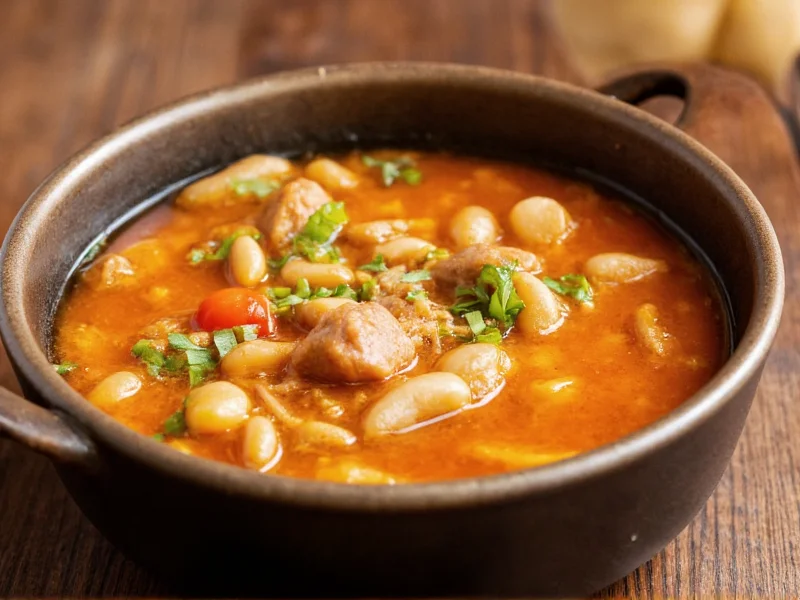Hot and sour soup stands as one of China's most iconic culinary creations, celebrated for its perfect balance of contrasting flavors. This beloved dish originated in Sichuan province, where chefs mastered the art of combining pungent heat with sharp acidity. Understanding what's in hot and sour soup reveals why it has captivated palates worldwide for centuries.
Core Ingredients That Define Authentic Hot and Sour Soup
The magic of hot and sour soup lies in its carefully balanced components. Each element serves a specific purpose in creating the signature flavor profile that makes this dish so distinctive. Let's examine the essential hot and sour soup ingredients that transform simple components into culinary perfection.
The Sour Component
Chinese black vinegar forms the backbone of authentic hot and sour soup's tangy profile. Unlike Western vinegars, this aged rice vinegar offers complex notes of smokiness and subtle sweetness alongside its acidity. Some regional variations incorporate Chinkiang vinegar, which provides deeper umami characteristics. The vinegar must be added at the end of cooking to preserve its volatile aromatic compounds—adding it too early would diminish the distinctive sour punch that defines the dish.
The Heat Element
White pepper, not chili peppers, traditionally provides the "hot" in authentic hot and sour soup. This might surprise Western diners accustomed to red pepper flakes in Americanized versions. High-quality white pepper delivers a clean, sharp heat that penetrates the palate without overwhelming the other flavors. Some Sichuan preparations incorporate a touch of chili oil for additional complexity, but the primary heat always comes from freshly ground white pepper.
Essential Textural Components
Wood ear mushrooms contribute crucial texture with their satisfying crunch, while rehydrated shiitake mushrooms provide earthy depth. Bamboo shoots offer a subtle sweetness and firm bite, and silky tofu threads create visual appeal. These elements work together to create the signature mouthfeel that distinguishes proper hot and sour soup from imitations.
| Ingredient Category | Authentic Components | Western Adaptations |
|---|---|---|
| Sour Element | Chinese black vinegar | Rice vinegar or white vinegar |
| Heat Source | White pepper | Red pepper flakes or chili oil |
| Mushrooms | Wood ear and shiitake | Button mushrooms |
| Protein | Shredded pork or chicken | Often omitted or substituted |
| Thickener | Cornstarch slurry | Cornstarch or flour |
Regional Variations Across China
What's in hot and sour soup differs significantly across China's culinary landscape. The Sichuan version features more aggressive heat and pronounced sourness, while Beijing-style incorporates more bamboo shoots and wood ear mushrooms. In eastern China, chefs often add a touch of sugar to balance the flavors, creating what locals call "sweet and sour hot soup." Understanding these regional hot and sour soup ingredients helps appreciate the dish's complexity beyond the basic recipe.
Traditional Preparation Techniques
The order of ingredient addition proves critical in authentic preparation. Chefs begin with a rich meat broth, then incorporate rehydrated mushrooms and bamboo shoots. The tofu and protein elements follow, with the vinegar and pepper added at the very end. The cornstarch slurry goes in last to achieve the perfect silky consistency without clouding the broth. This precise sequence ensures each component maintains its distinct character while contributing to the whole.
Common Misconceptions About Hot and Sour Soup Ingredients
Many Western restaurants serve versions that barely resemble the authentic dish. What's typically in American hot and sour soup often includes ingredients never used in China, like excessive chili oil or artificial flavorings. True hot and sour soup achieves its complexity through natural ingredients, not shortcuts. The best versions use homemade broth and freshly ground pepper for maximum flavor impact.
Creating Authentic Flavor at Home
When preparing hot and sour soup, ingredient quality proves paramount. Seek out Chinese black vinegar at Asian markets, and use dried shiitake mushrooms for superior flavor compared to fresh. Properly rehydrating the mushrooms in warm water unlocks their full potential. For the broth, a homemade chicken or pork stock makes a dramatic difference over store-bought alternatives. These authentic hot and sour soup components transform a simple recipe into something extraordinary.
Ingredient Substitutions for Home Cooks
Finding authentic ingredients can challenge home cooks outside major cities. While Chinese black vinegar remains irreplaceable for true flavor, a combination of rice vinegar and a touch of balsamic can approximate its complexity. Dried wood ear mushrooms prove essential for texture, but fresh shiitakes can substitute for dried in a pinch. Understanding what gives hot and sour soup its distinctive character helps make intelligent substitutions when necessary.
The Science Behind the Flavor Balance
What's in hot and sour soup works through careful chemical interaction. The acetic acid in vinegar interacts with the piperine in white pepper to create a synergistic effect greater than either component alone. The glutamates in mushrooms and meat broth enhance both flavors, while the cornstarch thickener helps distribute these compounds evenly across the palate. This scientific understanding of hot and sour soup ingredients explains why precise proportions matter so much.











 浙公网安备
33010002000092号
浙公网安备
33010002000092号 浙B2-20120091-4
浙B2-20120091-4